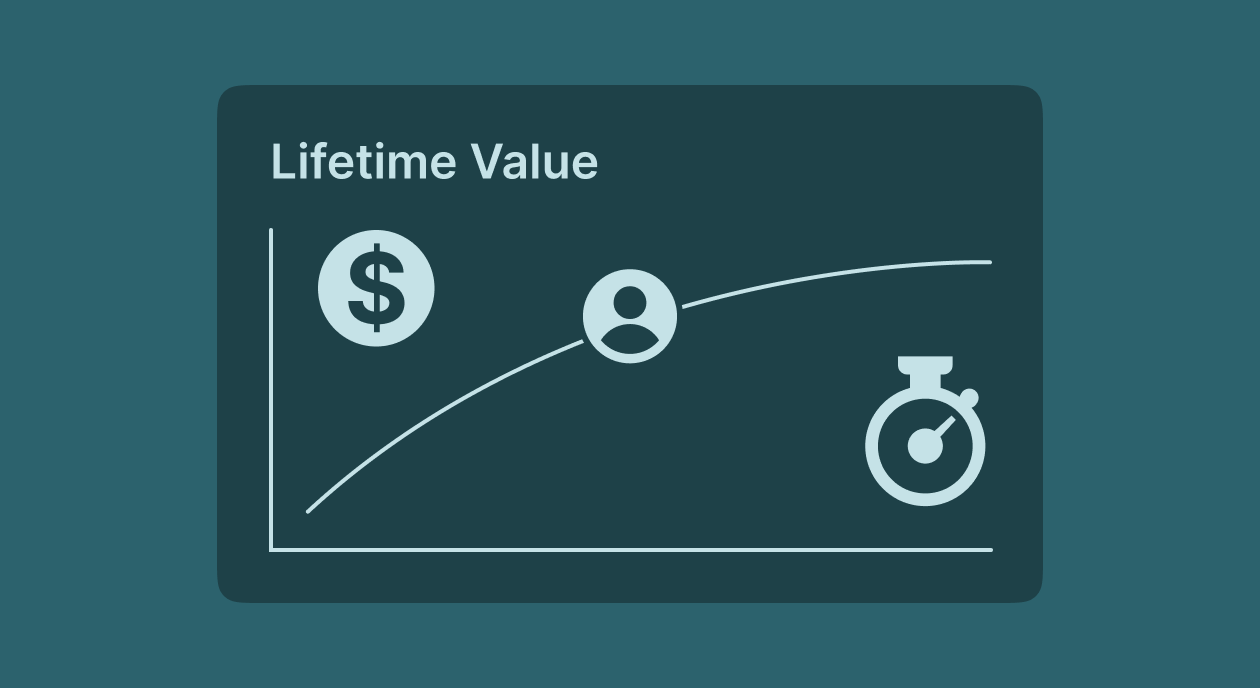In the fiercely competitive world of mobile apps, standing out from the crowd and reaching your target audience is an uphill battle. You’ve created a great app backed with valuable research into your target market. Now it’s time to advertise how great the app is, right?
This is the time when you dive into digital marketing for your app, specifically App Store Optimization. Choosing the right keywords, captivating descriptions, screenshots, and clean logos are all part of ASO’s best practices. With a correct ASO strategy, your app actually stands a chance against tens and hundreds of similar competition.
But when you’re making your strategy for ASO, do you stop and document what you’ll do if your app suffered through cannibalization? The word might throw off many people but it’s a very real threat that attacked the likes of Netflix in their early days.
And the reason we’re going to talk about cannibalization today is because apps that don’t make out of cannibalization often cease to exist!
Understanding cannibalization in ASO
When we’re going through app store optimizations, it’s crucial to balance the ASO strategy to avoid cannibalization. Wait, what now?
Cannibalization refers to a phenomenon where an app’s organic downloads drop because of paid installations or ads. When you engage different acquisition channels such as organic searches and paid ads, you’re slicing your app’s organic performance in half.
There are 2 main ways ASO cannibalization takes place so let’s take a quick preview of them.
Paid to organic cannibalization
When an app heavily relies on paid user acquisition campaigns, it may get more visibility through advertisements, but this could potentially reduce its organic downloads.
Users who might have discovered the app organically through an app store search or recommendations may now choose to install it through the paid advertisement link, leading to a decrease in organic downloads.
Organic to paid cannibalization
If an app focuses solely on optimizing its ASO strategy to boost organic traffic, it might see an increase in organic downloads. However, if the app later starts running aggressive paid acquisition campaigns, it could draw users who would have otherwise found and installed the app organically, resulting in a decline in organic downloads.
To define cannibalization visually, imagine this: App A has a strong ASO strategy, and most of its downloads are organic. It decides to launch a paid advertising campaign to increase its user base.
As a result, the app starts getting more paid installs but fewer organic downloads because users who would have found the app through app store searches or recommendations are now installing it through advertisements!
The app killed– or rather cannibalized– its organic downloads.
Cannibalization: a double-edged sword
The word cannibalization never comes from any good-spirited means. It’s just not a great word! But when we’re talking ASO cannibalization, I want you to pause on your cannibalization calculations and realize that the phenomenon has benefits too.
Increased visibility
Did you know that having multiple apps in the same category could boost the overall category visibility by 15 to 20%? When multiple apps from the same developer target similar keywords and audiences, it can increase overall visibility in the app stores.
That means greater user acquisition and revenue if you have a monetized app!
Cross-promotion opportunities
By promoting one app to users of another app within the same portfolio, developers can cross-promote and encourage users to explore and download other apps they might find valuable. This can lead to higher user engagement and retention rates across the entire app portfolio.
Better market penetration
Having multiple apps addressing different niches or user needs allows developers to penetrate various segments of the market. This diversification can be advantageous, especially when some niches are more competitive or saturated than others.

Now let’s talk about the other edge of this sword named ASO cannibalization. Here are the downfalls of cannibalization in mobile apps:
Decreased organic growth
When multiple apps from the same developer compete for the same keywords or target audience, organic downloads may suffer.
Instead, if your app was enjoying great organic growth in its category, employing aggressive paid marketing ads is the worst thing you can do. These paid user acquisition roots drag your organic growth down for increased user acquisition, causing you to sometimes rank low in App Stores!
Over-reliance on paid efforts
If developers heavily rely on paid acquisition campaigns to compensate for the decline in organic downloads, it can lead to an over-reliance on paid efforts. This over-dependence on paid marketing can be expensive and less sustainable in the long term.
Confused brand perception
Having multiple apps with similar names or branding can confuse users and dilute the developer’s brand perception. Users may not be able to differentiate between the apps, leading to decreased user trust and loyalty.
Increased acquisition costs
At the end of the day, you are paying money to have paid user acquisition methods at work. Cannibalization can drive up acquisition costs since developers might end up paying for users they could have acquired organically.
According to AppsFlyer, organic installs have the highest long-term retention rate compared to other acquisition channels.
The reasons behind cannibalization
Before I move to talk about ASO metrics and KPIs or how to calculate cannibalization with the cannibalization rate formulas, how about we figure out the root causes of cannibalization?
Surprisingly, there are more ways than one for your app’s organic growth to have high cannibalization rates.
Aggressive marketing strategies
When developers heavily invest in paid user acquisition campaigns, it can lead to increased visibility and installations through those campaigns. Remember that one app advertisement that gets annoying because that’s the ONLY ad you see on Youtube and such?
Those aggressive ad strategies often come with a large user acquisition at the expense of organic downloads, since users who would’ve found the app organically now choose to install it through paid advertisements.
Changes in App Store algorithms
App stores frequently update their algorithms to improve search results and user experience. These changes can impact app rankings and visibility. If a developer has multiple apps targeting the same keywords or audience, changes in algorithms can cause internal competition, leading to cannibalization among the developer’s own apps.
Keyword overlapping
If multiple apps from the same developer or company target similar keywords, they may end up competing against each other for the same user searches. This can cause confusion and dilute the overall visibility of individual apps. Another term for this is ASO keyword cannibalization where your keyword choices are what’s killing your organic growth.

For instance, if your app is a celebrity gossip hub, using keywords like “news, latest news, reports,” can be misleading with actual current affairs and news apps.
This causes confusion amongst acquired users, leading to lower engagement and ultimately, low conversions. It may also birth poor reviews and ratings on the app store, causing your app to have a short shelf-life due to ASO keyword cannibalization!
Tip: Make yourself an ASO efficient checklist with winning keywords to ensure your ASO strategy fosters healthy growth and turns into a profitable business for you.
Lack of differentiation
If apps within the same portfolio offer similar features and functionalities, users may not perceive significant differences between them. Having a user interchangeably use 2 apps for the same functionality isn’t a likely scenario that’s going to occur.
As a result, the apps may end up cannibalizing each other’s downloads, as users opt for one app over the others without distinct value propositions.
Want to know the secret trick to differentiate your app even if it’s just the same as tens of others? Keep reading…
Limited target audience
In some cases, a developer’s apps might cater to a niche audience where the pool of potential users becomes limited. When multiple apps compete for the same small audience, cannibalization is more likely to occur.
Sometimes, there’s just not a lot to go around for everyone. And you want to keep your app far away from those times.
Intense competition
The app market is highly competitive, and new apps are constantly entering the market. In such a scenario, if a developer launches multiple apps within a similar category, they might end up cannibalizing each other’s potential user base.
Some for you becomes none for you within days in an intense competition!
Inconsistent branding and messaging
Have you noticed how some apps just stick in memory because they’re just that unique and outstanding? You thought of an app and so did I! That’s all thanks to consistent branding and messaging from apps.
If the branding and messaging of multiple apps from the same developer are inconsistent or confusing, users may not associate them with the same company. This lack of brand recognition can lead to cannibalization, as users may not connect the dots between the apps.
Calculating cannibalization
The formula for cannibalization calculation is one of the simplest ones you can come across in the app dynamics. The formula is as follows:
Measuring cannibalization: key metrics
When it comes to measuring cannibalization in your app portfolio, keeping an eye on key metrics is essential for making informed decisions and optimizing your ASO strategy. It’s like steering a ship through rough waters – staying vigilant is the key to avoiding potential pitfalls and capitalizing on opportunities!
Organic keyword rankings
Firstly, tracking organic keyword rankings is crucial. Monitor how your apps perform in organic search results for target keywords. If you notice significant overlaps in the keywords that different apps are ranking for, it’s a red flag for potential cannibalization. Diversifying your keyword strategies can help prevent this issue and boost individual app visibility.
Organic vs paid downloads
Secondly, keep a close watch on the ratio between organic and paid downloads. A healthy balance is essential for sustainable growth. If one app’s paid downloads surge but organic downloads dip, it may indicate cannibalization. Remember, organic downloads are like a beacon of trust – users discover and install your app without direct incentives, which translates to stronger engagement and retention.
User acquisition costs
Another vital metric to monitor is user acquisition costs (UAC). If you observe increasing UAC alongside decreasing organic downloads, it could be a sign of over-reliance on paid efforts. Striking a balance between organic and paid strategies ensures efficient resource allocation and long-term success.
Other qualitative KPIs
Furthermore, look out for changes in user behavior. A sudden shift in-app engagement or retention rates might indicate cannibalization. Regularly analyze user feedback and reviews to understand their perceptions better. If users find your apps confusing or redundant, it’s time to reevaluate your app portfolio strategy.
To sail smoothly and minimize cannibalization, focus on differentiation. Each app should have a unique value proposition, catering to distinct user needs. By crafting individualized app experiences, you create a compelling reason for users to choose one app over another.
Ultimately, measuring cannibalization requires a holistic approach, integrating both qualitative and quantitative data. As you navigate the waters of ASO, always keep the user at the heart of your decision-making process.
Adapt, iterate, and optimize to ensure that your app portfolio thrives, providing value to users while avoiding the pitfalls of cannibalization.
Data analysis tools for cannibalization
Tracking and measuring cannibalization in your app portfolio requires the right set of tools to gain valuable insights into app performance. Thankfully, there is an insane range of tools today that can do the analysis for you and present the information you need quickly!
App analytics platforms
App analytics tools provide comprehensive data on app performance, including downloads, user engagement, retention rates, and revenue.
By analyzing these metrics across different apps in your portfolio, you can identify patterns and trends that indicate cannibalization. For instance, a sudden drop in organic downloads for one app coinciding with a surge in paid downloads for another app might signal cannibalization.
With Adapty, you can access your accurate app analytics with ease. Understand the KPIs and complicated metrics in a simplified way so you can make the best decisions moving forward.
ASO tools
App Store Optimization (ASO) tools like AppTweak, MobileAction, and TheTool are designed to optimize app store visibility. These tools can help you track keyword rankings and app visibility for different apps in your portfolio.
By monitoring how your apps perform for shared keywords, you can identify potential cannibalization issues and make data-driven decisions to improve individual app rankings as well as your app’s visibility in the app store.
Data visualization software
Tools like Tableau, Google Data Studio, and Microsoft Power BI allow you to visualize app data from various sources in a unified and interactive manner. With these tools, you can create custom dashboards that display key metrics related to app downloads, revenue, and user behavior across your entire app portfolio.
Visualizing the data helps in identifying patterns and trends quickly, making it easier to spot potential cannibalization scenarios.
Attribution platforms
Attribution tools enable you to track the sources of app installs and user conversions. The first step to making informed decisions is being informed. These tools help you understand which acquisition channels lead to downloads for each app so you can assess how different marketing efforts may contribute to cannibalization.
Attribution platforms are essential when you’re working with a cannibalization formula, especially if it’s a product cannibalization formula!
For instance, if a significant number of users acquired through paid campaigns would have otherwise installed an app organically, it indicates cannibalization and will provide you with relevant statistics to see how rough the waters are for you.
Some of the best attribution platforms out there include:
User feedback and review analysis
Although not a specific tool, analyzing user feedback and reviews on app stores and social media can provide valuable insights into how users perceive your apps. You don’t need any special tools– just your app store.
Look for common complaints about app similarities or confusion between different apps. Addressing these issues can help mitigate cannibalization and make your users feel seen and heard, leading to higher user engagement and retention!
Cannibalization case study
A classic example of cannibalization comes from Netflix, a company that revolutionized the home entertainment industry. In the early 2000s, Netflix started as a DVD rental-by-mail service, allowing users to browse and rent DVDs online, and have them delivered to their homes.
As Netflix gained popularity and expanded its user base, they saw an opportunity to venture into the digital streaming market. In 2007, they introduced a streaming service that allowed subscribers to access a library of movies and TV shows instantly over the internet.
How did they handle the cannibalization?
The introduction of the streaming service posed a significant risk of cannibalization for Netflix’s DVD rental business. The fear was that users would abandon the higher-margin DVD rental service in favor of the more convenient and cost-effective streaming option.
To manage this cannibalization risk, Netflix adopted a strategic approach:
- Gradual transition: Netflix didn’t immediately shut down its DVD rental service when introducing streaming. Instead, they allowed both services to coexist, allowing users to choose between the two options based on their preferences.
- Differentiation of content: Initially, the streaming library had a limited selection compared to the DVD rental catalog. By offering exclusive content on each platform, Netflix aimed to entice users to maintain both subscriptions or choose the one that best suited their needs.
- Pricing strategy: Netflix implemented different pricing tiers for its streaming and DVD rental services. This allowed them to offer cost-effective streaming plans while still catering to users who preferred physical DVDs.
What were the results?
Over time, streaming became the primary focus of Netflix’s business, as it gained widespread adoption due to its convenience and access to a vast content library. The DVD rental service eventually saw a decline in user base as streaming became more popular.
However, by managing the cannibalization process strategically, Netflix successfully navigated the shift from DVDs to streaming and emerged as a dominant force in the digital entertainment industry.
Today, Netflix is known as one of the leading streaming platforms worldwide, showcasing the power of adapting to changing market demands while minimizing the negative impacts of cannibalization. The Netflix example illustrates that cannibalization is a natural consequence of innovation and market shifts. And it most certainly doesn’t have to be harmful!
Preventing and managing cannibalization
Now is the time I let you in on the fun of managing cannibalization as it happens to your app. So here are the top 7 tips to prevent and manage cannibalization as soon as you find out it’s real and it’s happening!
Differentiate apps
Ensure that each app in your portfolio has a unique value proposition and serves a distinct target audience. This differentiation reduces the likelihood of internal competition for the same users.
Optimize your keywords
Diversify your keyword strategy for each app to target different search intents. Avoid using the same set of keywords across all apps to minimize cannibalization and maximize visibility.
Balance paid and organic efforts
Maintain a healthy balance between paid and organic user acquisition strategies. Over-reliance on paid marketing may lead to cannibalization. Optimize both channels to reach different user segments effectively.
Make data-driven decisions
Analyze app performance metrics regularly to identify potential cannibalization issues. Monitor organic keyword rankings, download ratios, and user acquisition costs to make informed decisions.
Cross-promote your apps
Leverage cross-promotion opportunities within your app portfolio to encourage users to explore and download other apps from your company. This can boost engagement and retention rates.
Use user feedback
Pay attention to user feedback and reviews to understand how users perceive your apps. Address any confusion or redundancy between apps to improve brand perception.
Make your app’s content exclusive
Offer exclusive content or features on specific apps to incentivize users to maintain multiple subscriptions or choose the app that best suits their needs.
Why measurement matters
Cannibalization can either make or break your ASO strategy and the success of your app. Perhaps the only question now is how important cannibalization detection is.
Accurately measuring cannibalization in ASO helps marketers…
Optimize their keyword strategies
Identifying overlapping keywords across multiple apps allows marketers to diversify keyword targeting and avoid internal competition. This ensures that each app has a unique position and maximizes visibility for relevant searches.
Allocate resources wisely
Knowing which apps are cannibalizing each other helps marketers allocate marketing budgets more efficiently. They can focus on promoting apps with higher organic growth potential and reduce spending on campaigns that lead to cannibalization.
Enhance app differentiation
Understanding user behavior and preferences enables marketers to refine app positioning and value propositions. This promotes better differentiation and minimizes confusion among users, reducing the likelihood of cannibalization.
Improve user acquisition
By recognizing the impact of cannibalization on organic downloads, marketers can fine-tune their user acquisition strategies. They can strike a balance between organic and paid efforts to drive sustainable growth.
Enhance portfolio strategy
Accurate measurements of cannibalization help marketers evaluate the overall health of their app portfolio. They can identify underperforming apps and decide whether to update, consolidate, or retire certain apps.
Conclusion
Understanding and measuring cannibalization in ASO is of critical importance for apps. By accurately assessing the impact of cannibalization within their app portfolio, you can make informed decisions to optimize their ASO strategies and drive sustainable growth.
Take charge of your ASO efforts and navigate the competitive app landscape with confidence. Embrace data-driven decisions, adapt to user needs, and continuously optimize your app portfolio. Understanding and managing cannibalization will ultimately lead to sustainable success and a stronger presence in the ever-evolving app market.
Arm yourself with the most updated app insights and information at Adapty, the one-stop platform to monetize your app and build a paywall system!




